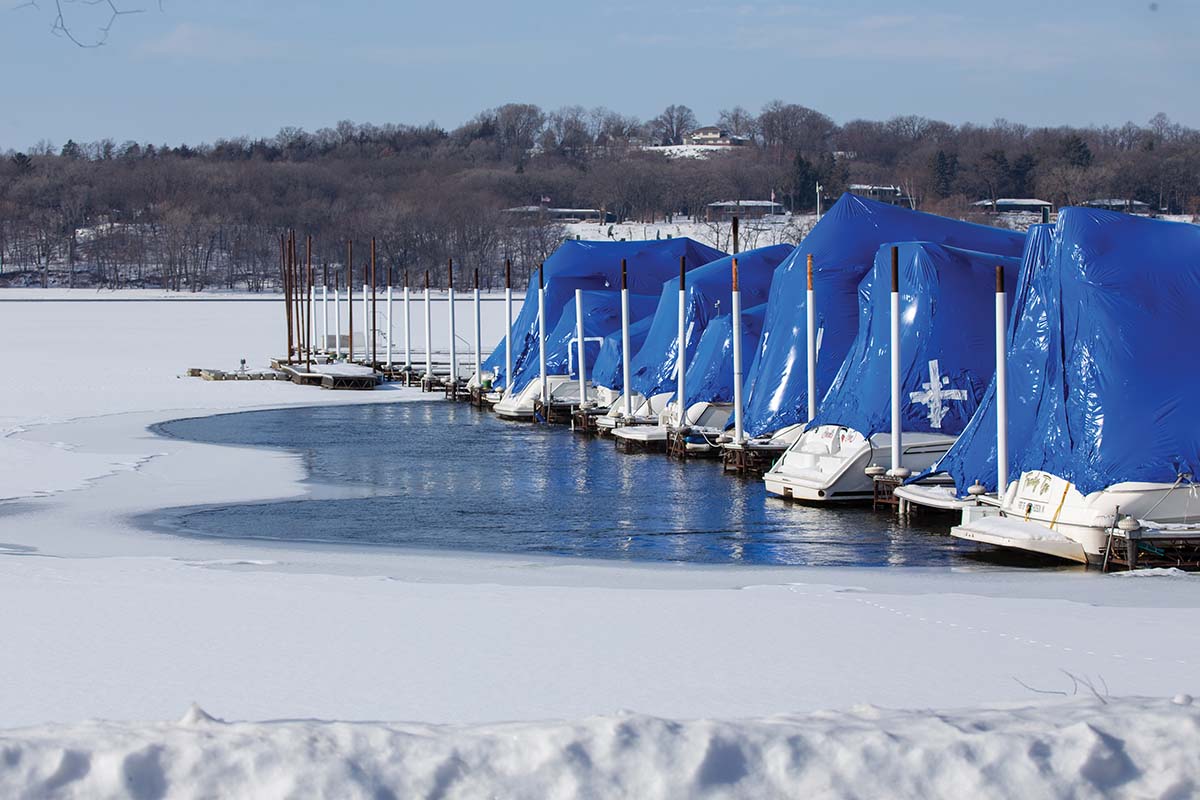
Keep your Dock or Marina Ice Free This Winter
Published on August 31, 2021You have spent the summer focused on boaters and the water. During peak season, your staff has spent countless hours assisting boaters as they leave and return to their slips, while your focus has been on reservations, billing, daily maintenance schedules, and the numerous protocols and procedures that require your attention. While it’s tempting to leave all off-season prep until the last minute, it will save you time and money and make next season much more successful if you plan ahead. It’s important to think about protecting your dock and marina from ice formation long before cold weather arrives. As soon as it’s cold enough, anything left in the water is subject to ice expansion and jacking, which can cause complete destruction.
To help explain what can happen to a dock or slip in the water over winter, Kasco’s de-icing category manager and de-icing expert Andy Gillis walked Marina Dock Age through the basics.
How can snow and ice damage your dock?
Snow and ice buildup can be detrimental to docks, pilings, piers, bulkheads or anything left in the water over the winter. As water temperatures decrease and the entire water column becomes colder, ice will begin to form around in-water property. As ice forms, it expands and contracts causing it to shift its position along with the position of anything in its way. This is especially prevalent in areas with tidal changes. When the tide is high, ice will form higher on structures. When the water level recedes, the ice formation will be pulled away from the structure, potentially causing damage, and then will reform lower on the structure. This constant reformation can have devasting effects on property. High wind conditions act very much like tidal changes and can affect ice formation as well.
What damage can ice buildup cause?
Ice expanding and contracting will raise, lower, push or completely split pilings resulting in an expensive fix. Single pilings such as tie-off pilings or boat-lift pilings will lift up, or “jack up,” first as they weigh less than piers. It’s not uncommon for ice to cause severe damage to docks left in the water unprotected over the winter. Piers with ice damage often have pilings at several different heights and will point in several directions from the raising and lowering of the water level and subsequent ice formation.
Ice formation can even effect pipes, rocks or cables used to secure docks or piers. It’s important to keep ice away from these areas as it could easily cause a pipe or cable to break, resulting in the dock or structure sinking.
How does a de-icer keep ice away?
De-icers keep ice away by pulling warmer water up from the bottom of the waterbody. As colder air temps settle in, the top layer of water also decreases in temperature causing it to rise in the water column. Colder water on top and warmer water on bottom creates a thermal stratification, or layering, in the water column, allowing the colder water to ultimately turn to ice at the surface.
De-icers work to break up this temperature difference and, in doing so, prevent ice from forming. Every dock or pier is different, but, in general, four to six feet of depth is needed to allow enough space to break up a temperature difference. Aspects like geographic location, elevation, type of structure and water depth will affect how much open water, or ice-free area, is created. There may not be a one-size-fits-all approach, but de-icers are extremely efficient in keeping ice away and protecting valuable property.
How does protecting your dock ensure a smooth start to spring?
By keeping water open around your dock or pier, you’re protecting your property from damage and yourself from unnecessary headaches and expenses. The average cost to repair or replace in-water property like a dock or pier can easily soar into the thousands. It can sometimes take months to obtain the necessary construction permits to fix damage, months you’d rather spend welcoming boaters to your marina.
Andy Gillis, de-icing category manager at Kasco, has been within the de-icing and water quality management industry for over 45 years. With experience in almost every application from residential waterfront properties to entire marinas, the knowledge Andy has is unrivaled.
| Categories | |
| Tags |





